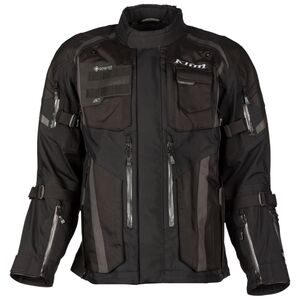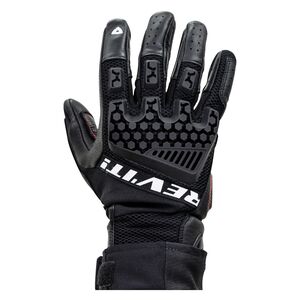If you were in charge of building the best full-size adventure-touring motorcycle possible, where would you start? A BMW GS, perhaps? Triumph thought the same thing.
It’s hard to blame any company for going that route, considering how many riders (and writers) continue to go on and on and on about how great the flagship BMW GS is, as an experience and a piece of engineering. So, maybe a more pointed question, if Triumph wanted to make the 2023 Tiger 1200 as good or better than a BMW R 1250 GS, what needed to change? Almost everything, it turns out.
The nuts and bolts
The Tiger 1200’s engine shares some architecture with the new 1,160 cc Speed Triple mill, but various internals, including the crankshaft and cams, are different. The result is 148 claimed horsepower and 96 foot-pounds of torque, up nine ponies and a half-dozen torquies from the old model. Most notably, the big cat has inherited the “T-plane” crank and uneven firing order from the Tiger 900 and 850 Sport models (Read Spurg's explanation here), meaning a larger version of the same lumpy sound and feel introduced by its smaller sibling. Other basic structures are carried over from the previous Tiger 1200 — a shaft final drive, a steel-tube frame, and a screenfull of electronically adjustable amenities — but everything has either been revised or rebuilt completely.
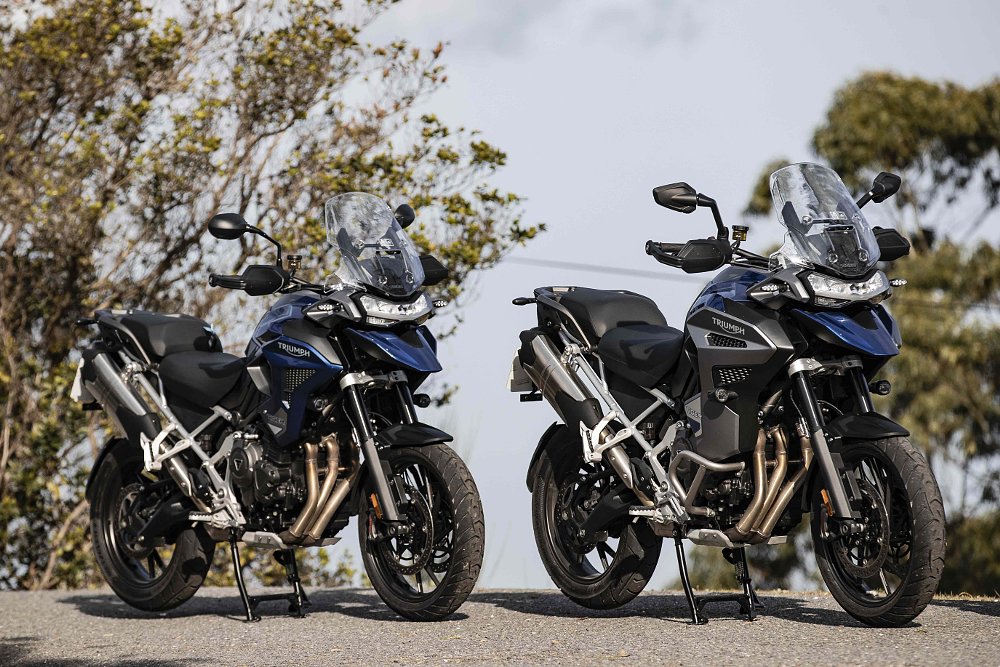
Near the top of Triumph’s list of goals was to make its new flagship ADV lighter and more compact. Also known as smaller. The front of the seat was moved 2.6 inches closer to the point where the front tire touches the road, reaching for more direct control and feel. Footpegs are lower, offering about an inch more legroom, and the width of the bike’s midsection has been reduced enough that the footpegs are about 0.8 inches closer to each other. Even though the seat is a little higher, the goal was to keep the standover height approachable.
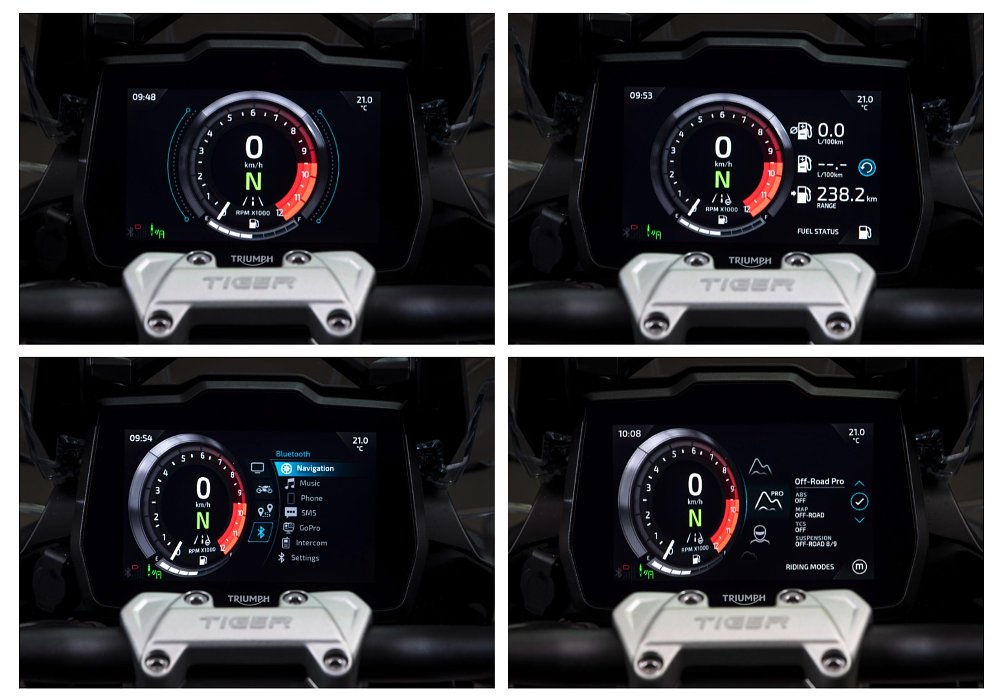
One of the reasons the rider cockpit could be moved toward the front contact patch are the twin, side-mounted radiators, which put the cooling fins farther from harm’s way and simultaneously make room for the front wheel to sit closer to the engine. Some of the weight-saving updates were simple, like a magnesium front subframe or the fuel tank being made of aluminum instead of steel. Slightly more complex are the forged-aluminum side plates that connect the main frame to the swingarm and rear subframe, with less weight and more rigidity than a continuation of the steel tube. All of these chess moves, and many more, add up to more than 55 pounds shaved off the Tiger 1200’s total weight.
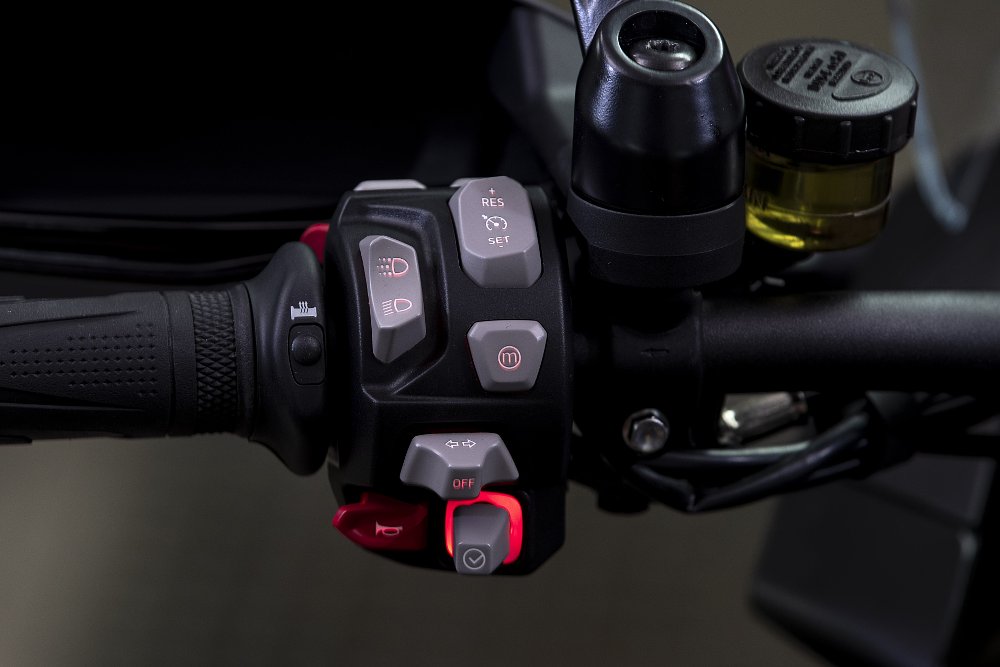
To better control this new, lighter Tiger there are naturally a boatload of electronic systems. However, credit to Triumph, it is not complicated. There are a variety of throttle maps, along with adjustable traction control and ABS, plus one menu for tuning the overall damping characteristics (nine settings) of the Showa semi-active suspension. Rain, Road, Sport, Rider, and Off-Road ride modes have preset parameters for each tunable setting, but each one can also be tweaked to the pilot’s preference. Most of the adjustability is predetermined, and the menus displayed on the seven-inch TFT screen that control the rider aids are not vast or confusing.
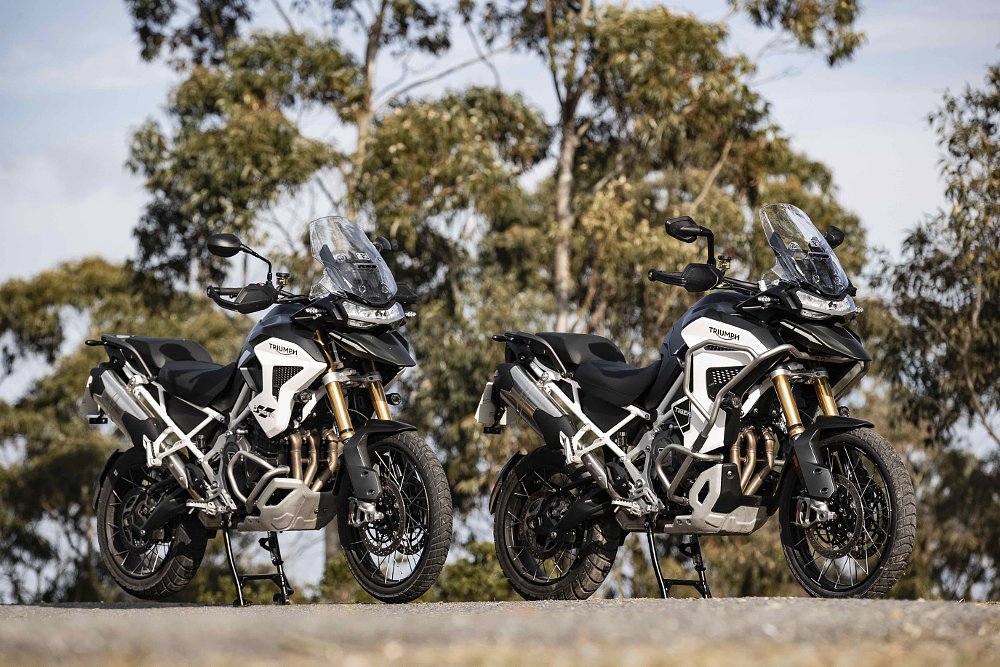
Where things start to get tricky are the many different models of Tiger 1200, and I probably should have pointed out sooner that our man Andy Greaser covered the basic rundown in his first-look article a few months ago. The quick explanation is that el Tigre Grande follows the naming and build convention of the 900 models, with GT versions using an 18- and 19-inch cast-wheel combination while Rally versions come equipped with 18- and 21-inch tubeless-spoke wheels and more suspension travel. There are three street-biased machines (GT, GT Pro, and GT Explorer) and two off-road-style bikes (Rally Pro and Rally Explorer). The “Explorer” moniker for either version means a 7.9-gallon fuel tank rather than the standard 5.3, plus a few tidbits.
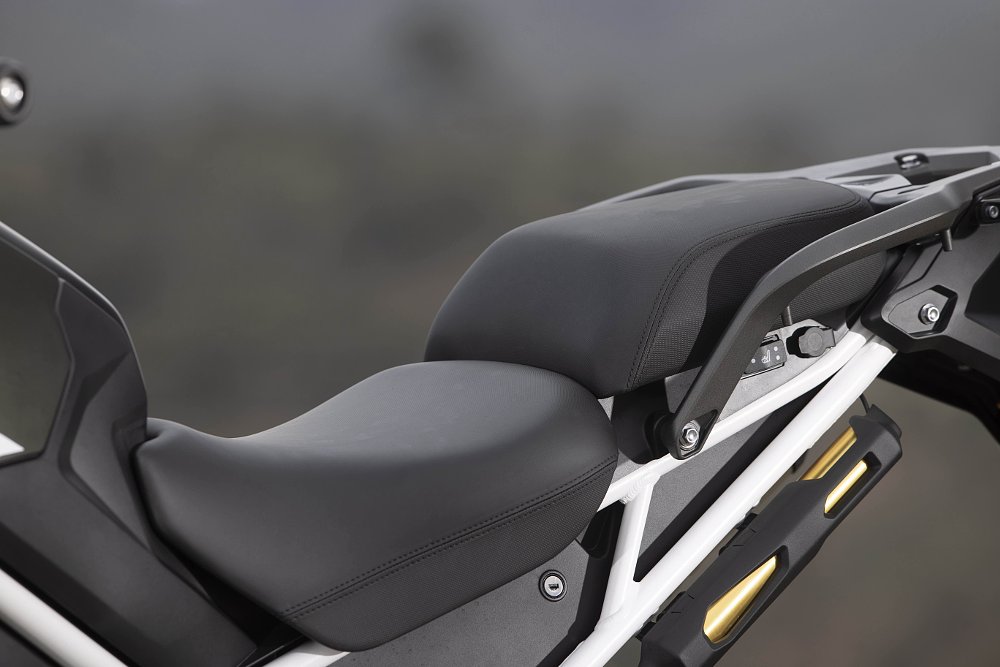
Five different models with two different fuel capacities plus two sets of wheels and suspension means listing everything would be an all-day affair, and I don’t think either of us have that kind of time. One thing to note is that the base GT is much more rudimentary, as it doesn’t come with either a skid plate or engine protection, cruise control, a centerstand, blind-spot warning, heated grips, cornering lights, tire-pressure monitoring, a quickshifter, hill-hold assist, or any off-road riding modes — most of which come on the other bikes as standard. (If you’d like to pore over the equipment and differentiators in models, the checklist slides are in this article's photo gallery.)
The ruts and jolts
I spent two days riding the Tiger 1200 in Portugal, one day on a variety of pavement and the other blasting along dirt roads and trails scattered over the arid and rocky foothills of the southwestern coast. The latter was more fun and less relaxing, because that’s usually the case but also because this bike has improved more as an off-road machine than it has as a street bike. If that seems like kind of an ugly way to compliment the new Tiger, allow me to explain.
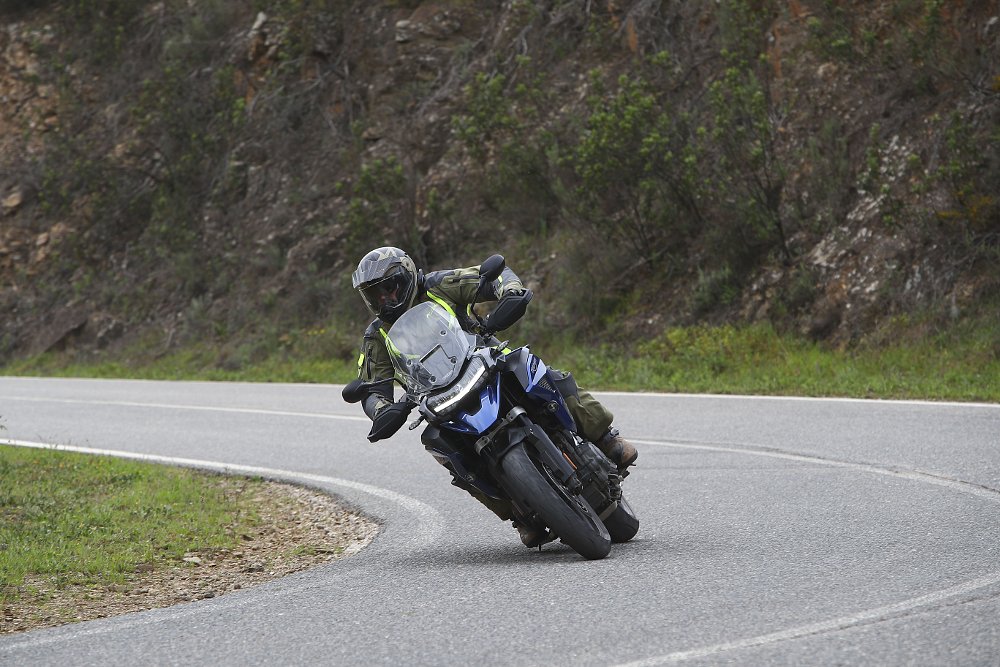
As a sport-touring machine, this new Tiger 1200 undeniably checks a lot of the right boxes. The engine is objectively good — it’s punchy and powerful and throws a unique sound out the pipe. It doesn’t mind being lugged and it’ll howl up to nearly 10,000 rpm with a rush of attitude and noise. There’s only one notable flaw, and that’s the slightly snatchy and jarring on/off throttle response. Sport and Off-Road seemed the worst, Road was better, and Rain was the best, though that curbs total output, as well. To be clear, it’s bad for a Triumph which is to say it’s probably average in motorcycling. Still, it’s a bit like going to a favorite Italian restaurant and getting a basket of bread that’s just OK. What happened to the usual thick, steaming, pillowy slices of perfection?
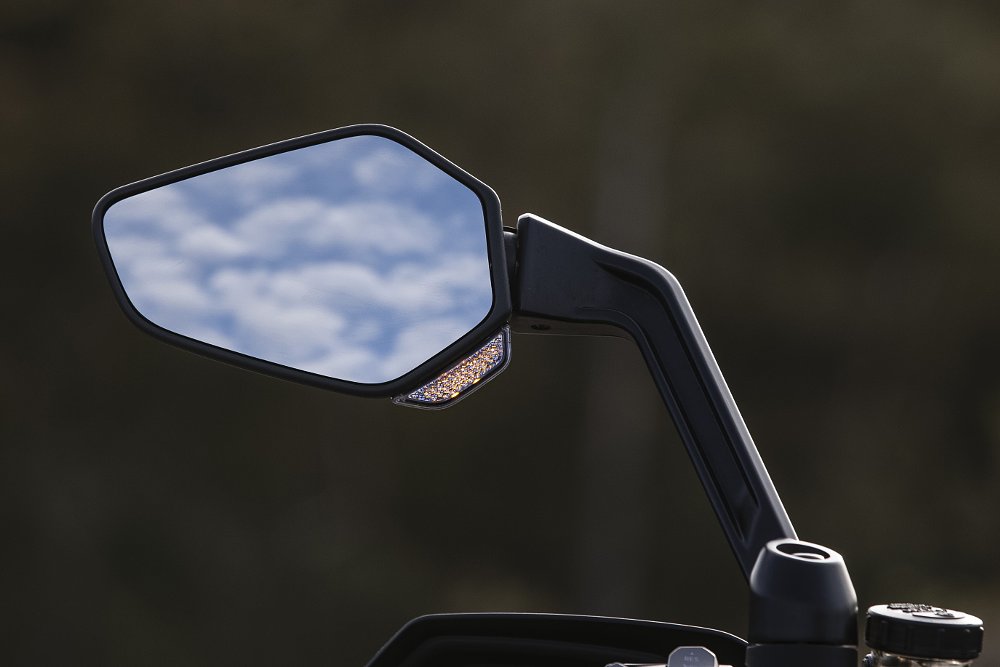
The chassis also gets high marks in general. It’s balanced and predictable and all of the other things a modern, $20,000 motorcycle should be. I spent the first half of the on-road day riding the GT Pro and GT Explorer — if you’re taking notes, those are the shorter, streetier versions with smaller, cast wheels. They were confidence-inspiring, and I giggled like a schoolboy on a snow day as I dragged footpeg feelers through one Portuguese corner after another. I liked the brakes, I liked the wind protection (even if the screen wasn’t quite tall enough for my six-foot, two-inch self), and I liked the electronics staying out of the way until I needed help. And I did need it.
Mark it down as a win for Triumph that it put nearly eight gallons of gas in a bike and it does not feel that way. The GT Explorer feels and acts 10 percent smaller than other eight-gallon ADVs even though it doesn’t give up power or range. Impressive. After the first hour or so, the caravan of moto-journos stopped to regroup and one of the more off-road oriented riders commented that he wished he had a 21-inch front wheel for all of this sport-touring stuff. Naturally, I laughed at him in front of our peers and told him he was an idiot.
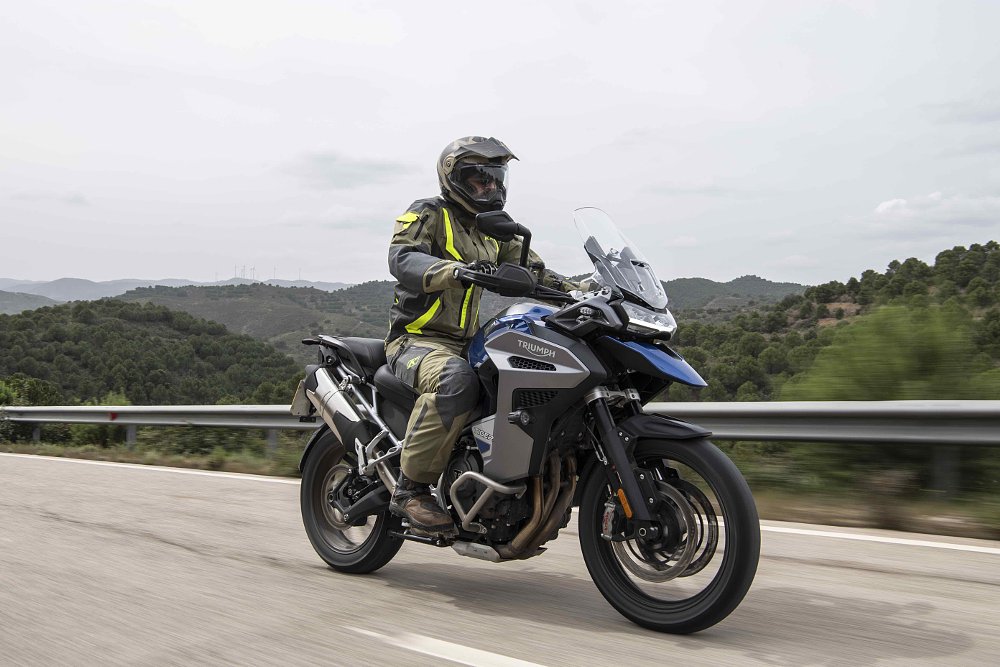
In the afternoon I rode the Rally Pro and Rally Explorer as we retreated along the morning’s route, and as I swung through the very same corners I thought a lot about how to apologize to the aforementioned “idiot.” Suddenly I wasn’t dragging footpegs, no doubt because of the longer suspension and wheel size. Overall agility felt about the same, maybe better due to the pointier front-end geometry. Wheelies? Not that it matters, but those were better, too. Hmmm. With as many people around as possible I told the fine gentleman who had wanted a bigger front wheel that he was, in fact, perfectly normal to look at and there was no need after all for him to stuff his face in the nearest toilet and flush. I’ve got a future in diplomacy.
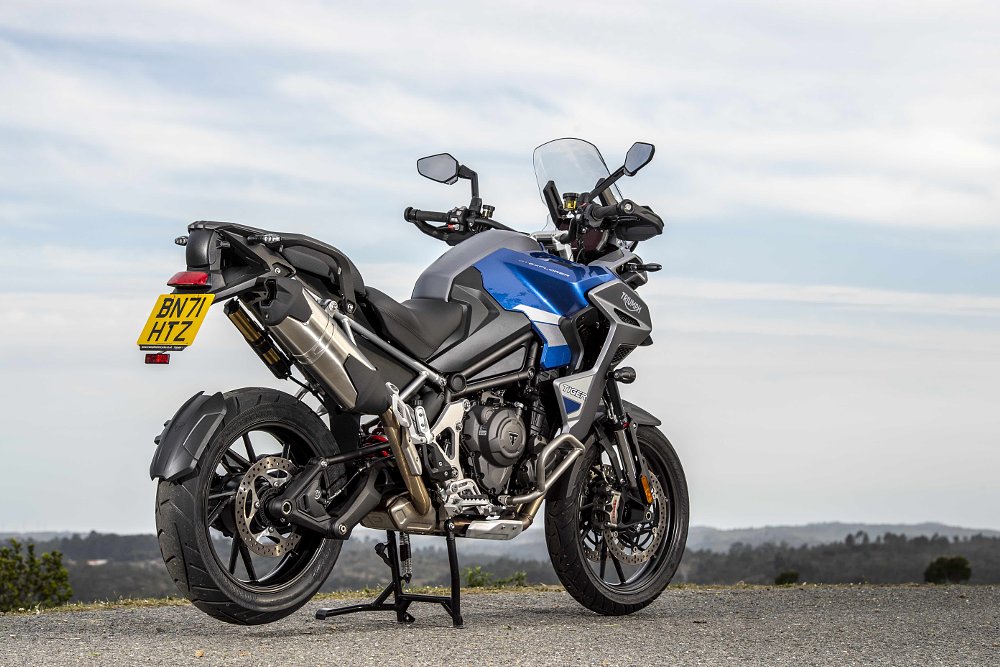
At any rate, don’t let my surprise and confusion take away from all of the other things that the new Tiger 1200 did well. The blind-spot-warning system, developed with Continental, projects radar off the tail of the bike and when a vehicle is sensed within a certain zone the rider is warned with a flashing amber light at the base of the corresponding mirror. Neat, helpful, and turn-offable if you hate it. The quickshifter is largely perfect, too, as is the comfort and adjustability of the seat.
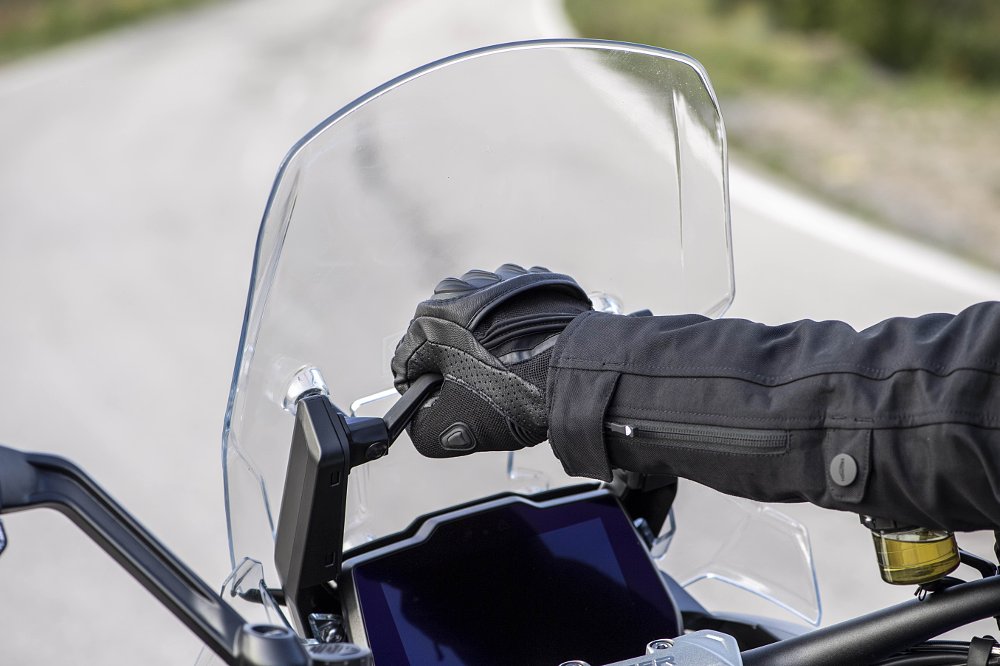
Riding on day two saw passenger pegs removed, handlebars rotated forward, and gnarly Michelin Anakee Wild rubber mounted to a fleet of Rally Pro models. Business would be dustier and more aggressive. Some good news, if you’re the type of adventure-touring rider who simply wants to trundle down dirt roads comfortably seated and sniffing the daisies, the Tiger 1200 Rally will be just fine, for all of the reasons I’ve mentioned so far. Some better news is that if you want to try to keep up with the charismatic Welshman who runs Triumph’s Adventure Riding Experience, as he roosts his way across the Iberian Peninsula, the Tiger 1200 Rally will be up for that, as well.
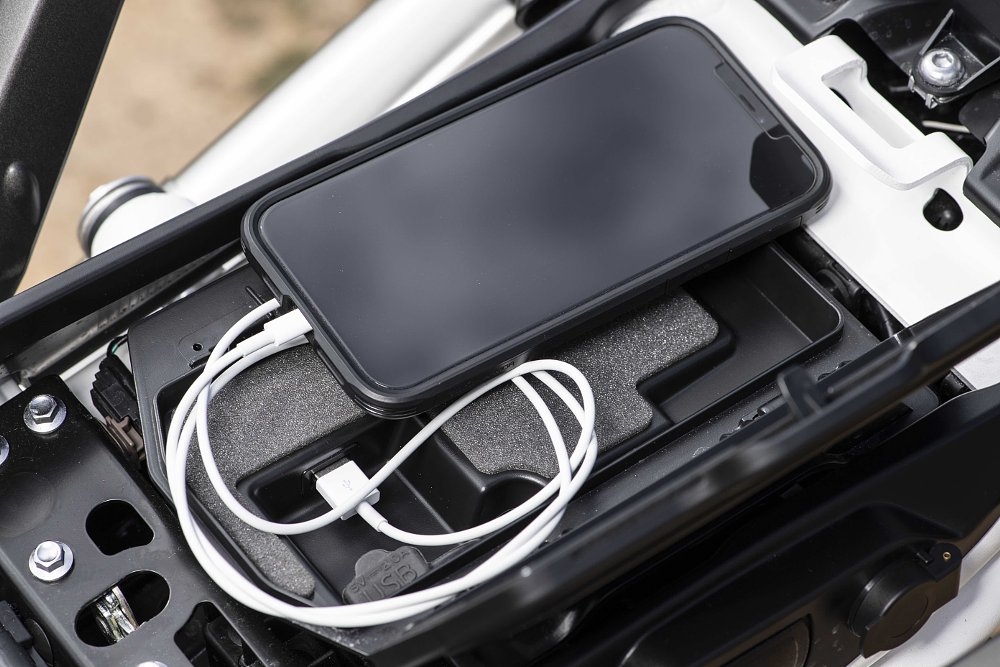
Most, if not all, of the positive impressions I had about this bike’s compact feeling and light handling on the street came back twofold in the dirt. Consider that compared to the Tiger 900 model line, the Tiger 1200 is only about 10 percent heavier. That contributes to excellent balance and poise on dirt roads and narrow trails, dare I say KTM-like, and certainly feels less overweight as a dirt bike than many other full-size ADVs. It tracks well through loose terrain and when it does slide it is as controllable and reasonable to recover as can be expected of a 550-pound machine.
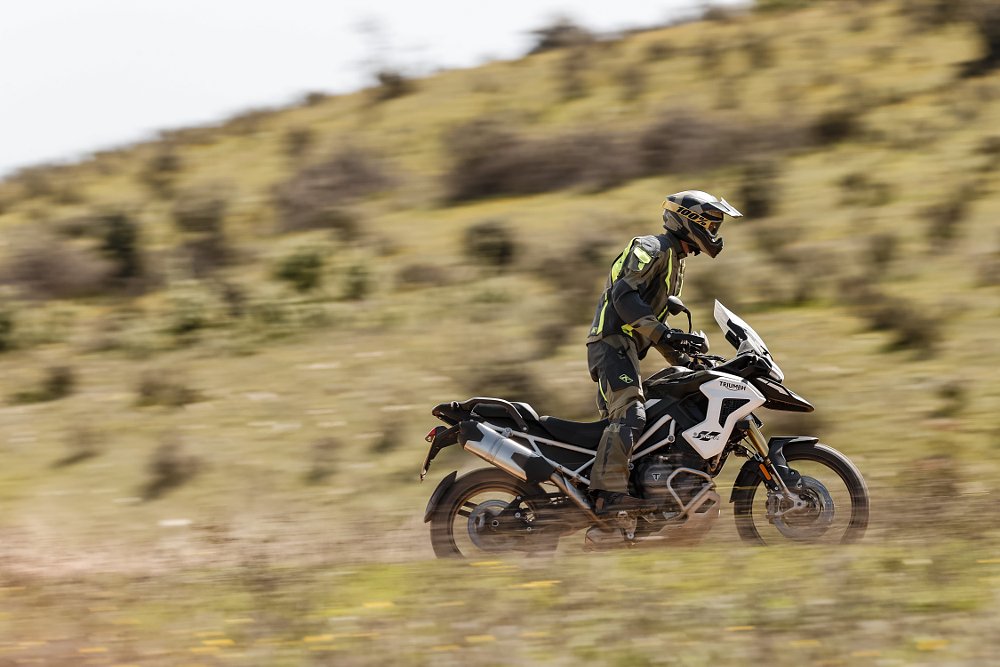
It’s still easy enough to get in trouble, though. That 10 percent additional weight is paired with a mill cranks out almost 60 percent more power and 50 percent more torque than the 900 engine. In other words, if you get rowdy on a gravel road (or any road) corners can come up quickly. If and when a corner does sneak up, you’ll be happy to learn that the Off-Road ABS is terrific, allowing the front wheel to turn as slow as half the speed of the bike and therefore putting plenty of control in the rider’s hands.
So, all good off road? Not quite. The throttle maps still bugged me, the only upside being that Rain mode’s cut to 100 total horsepower goes from tolerable on the street to arguably a better idea in the dirt. Also, some colleagues noted that the Tiger’s nifty, one-handed windshield adjuster seemed to tighten up after being doused with dust all day — mine was fine, but one of the screens wouldn’t move by the end of the ride. In general, though, this is a glowing example of a dirt-ready ADV. The engine is beastly but tractable and the chassis is solid, and to cap it all off I think I liked the Rally better as a street bike.
In the end
Stepping back and looking at the whole lineup, I do have some overall gripes. There was a lot of boasting in the technical presentation about how advanced the electronic suspension is and how seamlessly it provides nine different attitudes of chassis feeling. Triumph eliminated the shock linkage to save weight and claims to have compensated for that with the semi-active damping, which “simulates the effect of a suspension linkage.” I say it’s not extreme enough.
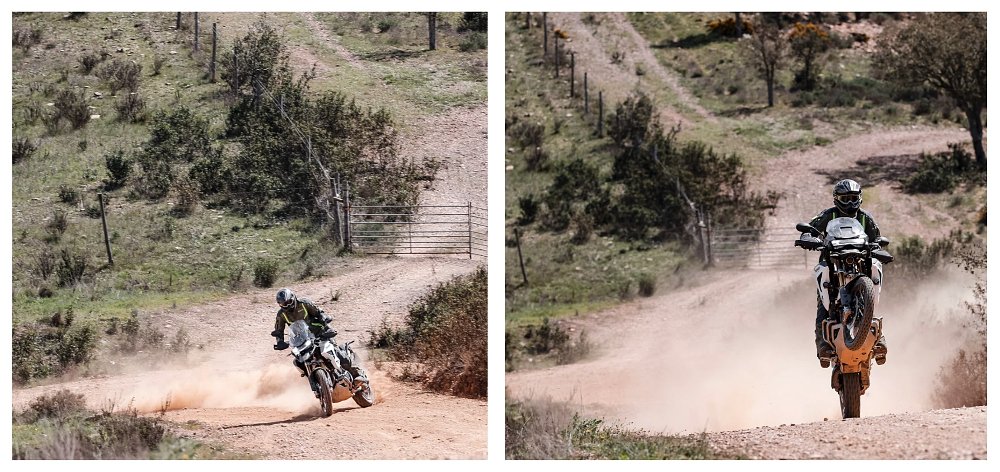
Give me Cadillac-cushy in full Comfort mode and then properly stiff compression damping when it’s dialed all the way the other direction in Sport. I found myself bottoming the suspension on seemingly moderate dips on the off-road route, even with the damping adjustment cranked all the way to stiff (preload is automatically set by the system and cannot be manually changed), and barely noticed even large adjustments on the street. Don’t just compensate for a linkageless shock, make the suspension do more than a linkage ever could. Dream big.
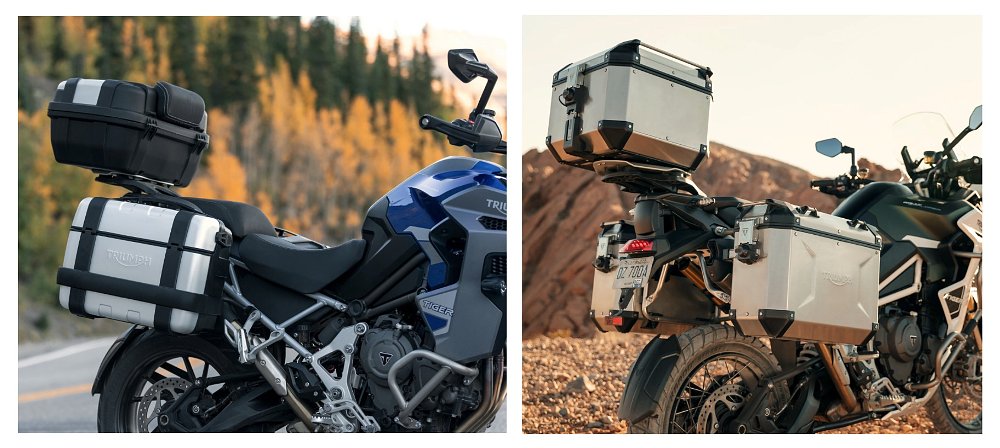
We’re getting deep into subjective territory here, I know. On that topic, Triumph focused on making the riding display ultra-simple and I think it went too far; I would prefer to at least have the option to fill the dead space with information if I so please, and in the past the folks in Hinckley have been excellent about providing a slew of display options. I miss that. Last of all, it is my belief that any touring motorcycle with an MSRP of more than $20,000 should not leave any room for complaints about the mirrors vibrating at highway speeds. You may think this is unfair. I stand by it.
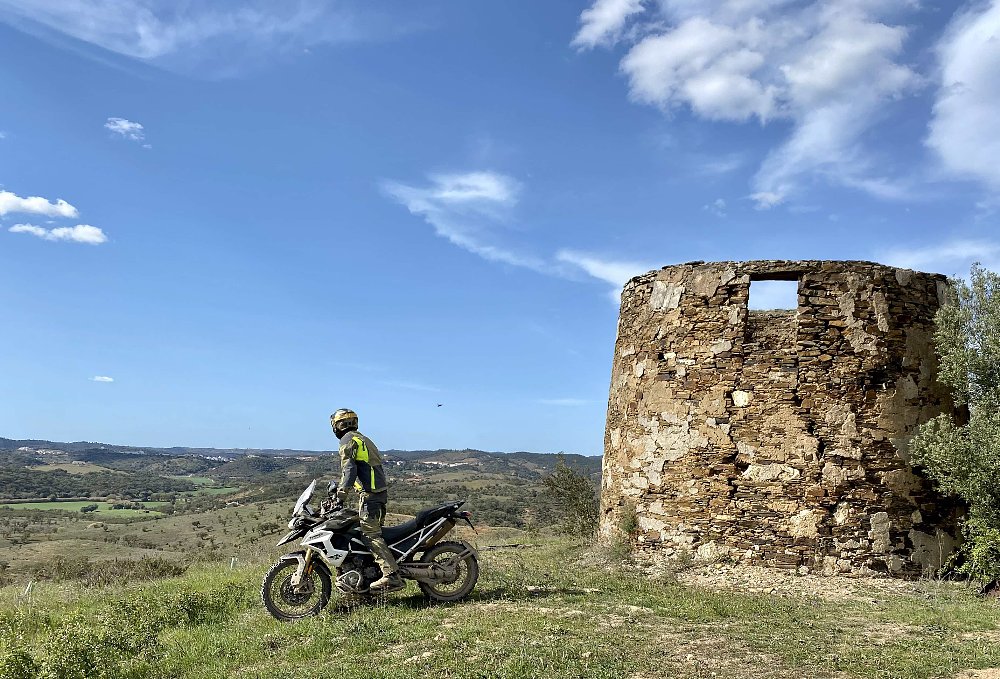
Now that I’ve written out all of these words and I’m aggregating my complaints, it seems harsh. As far as the throttle response, the dash, and the suspension adjustability, maybe I’m left a little cold. I suppose it's easiest, and most important, to criticize expensive motorcycles simply because of everything they claim to deliver. The inescapable truth is, this is a massive and exciting development for this model. Historically, the Tiger 1200 has been an also-ran in the race for ADV glory — a regal and charming sport-touring rig dressed up in its best BMW-GS costume. Those days are over.
This Tiger 1200 has arrived in a more meaningful way than ever, armed with all of the technology and features it needs to compete theoretically and practically. More importantly, the core of the machine is world-class. I don’t think it’s a better sport-touring bike than a BMW R 1250 GS, a Ducati Multistrada V4 S, a Honda Africa Twin Adventure Sports, or a KTM 1290 Super Adventure S. On the other hand it might be a better off-road machine than all of those bikes or their variants and, depending on your perspective, that’s more impressive.
| 2023 Triumph Tiger 1200 GT | 2023 Triumph Tiger 1200 Rally | |
|---|---|---|
| Price (MSRP) | $19,100; $21,400 (Pro); $23,100 (Explorer) | $22,500 (Pro); $24,200 (Explorer) |
| Engine | 1,160 cc, liquid-cooled, 12-valve, inline triple | 1,160 cc, liquid-cooled, 12-valve, inline triple |
|
Transmission, final drive |
Six-speed, shaft | Six-speed, shaft |
| Claimed horsepower | 148 @ 9,000 rpm | 148 @ 9,000 rpm |
| Claimed torque | 96 foot-pounds @ 7,000 rpm | 96 foot-pounds @ 7,000 rpm |
| Frame | Steel-tube with forged aluminum side plates | Steel-tube with forged aluminum side plates |
| Front suspension | Showa 49 mm fork, semi-active and electronically adjustable for compression and rebound damping; 7.9 inches of travel | Showa 49 mm fork, semi-active and electronically adjustable for compression and rebound damping; 8.7 inches of travel |
| Rear suspension | Showa shock, semi-active and electronically adjustable for spring preload and compression and rebound damping; 7.9 inches of travel | Showa shock, semi-active and electronically adjustable for spring preload and compression and rebound damping; 8.7 inches of travel |
| Front brake | Brembo M4.30 Stylema four-piston calipers, 320 mm discs with ABS | Brembo M4.30 Stylema four-piston calipers, 320 mm discs with ABS |
| Rear brake | Brembo single-piston caliper, 282 mm disc with ABS | Brembo single-piston caliper, 282 mm disc with ABS |
| Rake, trail | 24.1 degrees, 4.72 inches | 23.7 degrees, 4.4 inches |
| Wheelbase | 61.4 inches | 61.4 inches |
| Seat height | 33.5 / 34.2 inches | 34.4 / 35.2 inches |
| Fuel capacity | 5.3 gallons; 7.9 gallons (Explorer) | 5.3 gallons; 7.9 gallons (Explorer) |
| Tires | Metzeler Tourance, 120/70-R19 front, 150/70-R18 rear | Metzeler Karoo Street, 90/90-R21 front, 150/70-R18 rear |
| Claimed weight | 529 pounds; 540 pounds (Pro); 562 pounds (Explorer) | 549 pounds (Pro); 575 pounds (Explorer) |
| Available | May 2022 | May 2022 |
| Warranty | 36 months, unlimited miles | 36 months, unlimited miles |
| More info | triumphmotorcycles.com | triumphmotorcycles.com |

 Membership
Membership












